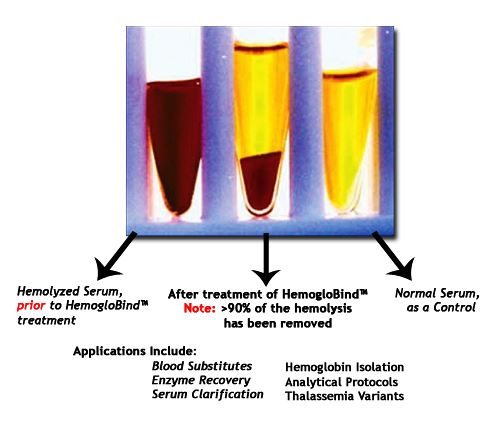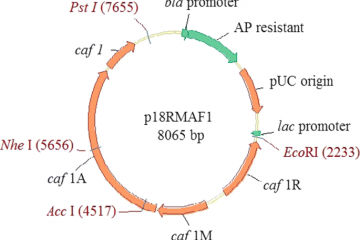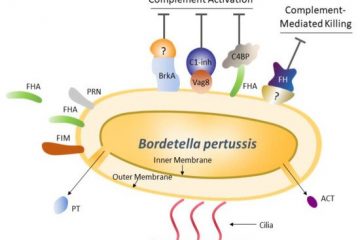HemogloBind Hemoglobin Removal and Capture
- Has a high degree of specificity for hemoglobin binding up to 10 mg/ml
- Applications in blood substitutes, enzyme recovery and analytical interferences
- Removes hemoglobin from any species including human, sheep, bovine, goat, etc
- Removes hemoglobin from organs, tissues.
- Hemoglobin removal from red blood cell lysate for proteomics and biomarker drug discovery
- The flow through fractions retain their enzymatic and biological activity
- The flow through fractions are compatible with LC-MS, activity based protein profiling and proteomic studies.
HemogloBind comes from a class of solid-phase, or surface-based, elastomeric poly-electrolytic surfaces that bind proteins through an empirically derived chemistry combining elements of polymer composition, cross-linking architecture and charge properties. HemogloBind™ is engineered for a high degree of selectivity and does not cross react with most common serum components, making it an excellent tool in numerous applications. These include analytical protocols where optical interference is problematic, such as bilirubin analysis and bulk serum clarification. Hemoglobin variants, as in thalassemia, bind with differential affinity towards HemogloBind™. For purification and/or analysis of hemoglobin, a modest elevation in pH will facilitate desorption of hemoglobin bound to HemogloBind.

Hemoglobin Depletion From Hemolyzed Plasma
DESCRIPTION
HemoTrial Kit includes 5 ml of HemogloBind™ and 5 Preps of HemoVoid™. HemoVoid™, a silica-based protein enrichment matrix, removes hemoglobin from erythrocyte lysate samples while concentrating low abundance, and/or low molecular weight proteins. The HemoVoid™ protocol uses mild buffers; the protocol conditions are so gentle that native enzyme activity is retained in elution fractions. Poly-electrolytes are polymers with repeating units of stationary charges. HemogloBind™ comes from a class of solid-phase, or surface-based, elastomeric poly-electrolytic surfaces that bind proteins through an empirically derived chemistry combining elements of polymer composition, cross-linking architecture and charge properties. As with bio-polymers like DNA and Heparin, governing their reactivity is the spatial presentation of the electrostatic groups along a flexible polymer chain.


